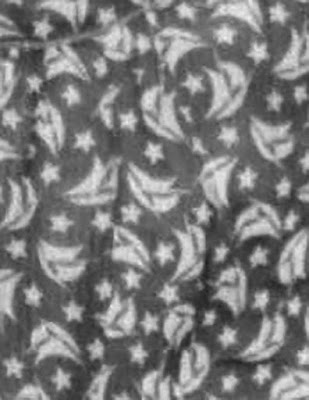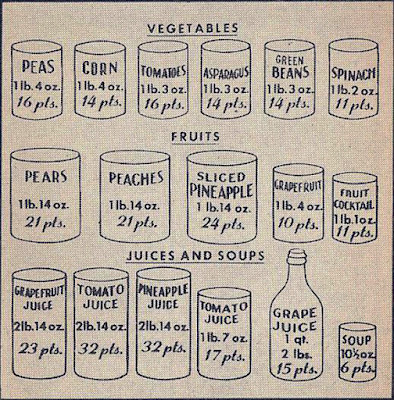"Farm girl leaning on wagon," near Morganza, Louisiana,
Photo by Russell Lee, 1938, Library of Congress
If you look online for "feedsack dress" this photo comes up often but no where does the caption tell us that she is "wearing a dress made from reused flour sacks." It just looks like it should be a flour sack dress; she looks so resourceful in her rural environment.
Or as Eleanor Beard's advertising for her Kentucky quilt business described Southern culture, the girl and her dress speak of the "unspoiled AngloSaxon sturdiness of [rural Southern] people."
The photo looks to feature a teenager who might be quite affronted by your sentimental interpretation of that dress. She is up-to-date fashionable in her modern cotton print. Describing it as recycled feedsacks might be illogical as well as rude. A dress like this for a size 10 human would require 4-1/4 yards of 36" wide fabric. At least 4 identical sacks.
Linzee McCray tells us the standardized World War II 100-pound (45.40 kg) bag provided slightly more than 1 yard (0.915 cm) of material.
The dress print: Nautical figures---sailboats and stars
The photo looks to feature a teenager who might be quite affronted by your sentimental interpretation of that dress. She is up-to-date fashionable in her modern cotton print. Describing it as recycled feedsacks might be illogical as well as rude. A dress like this for a size 10 human would require 4-1/4 yards of 36" wide fabric. At least 4 identical sacks.
https://trc-leiden.nl/trc-digital-exhibition/index.php/for-a-few-sacks-more/item/120-4-feedsacks-during-the-second-world-wara
Many will tell you of Depression-era clothing made from these colorful prints but during the darkest days of the Great Depression in the first half of the 1930s sacking for flour and feed was generally white or plain colors (after 1936).
The unnamed woman's dresses are what what one would expect of 1939 fashion; one looks to be a solid pastel with white trim and the other of white sacking with embroidered trim. She might have dyed the pastel dress or had enough "Tint-Sax" bags of one color to make the dress.
The Great Depression was a collective trauma that generated many family stories from those who lived through it, but most of the tales of feed-sack printed dresses really do not come from the 1930-1939 years but the ten years afterwards---1940 to 1950. For some reason the stories of fabric shortages during World War II and afterwards do not resonate like stories of poverty.
The U.S. did not ration cotton but many items required ration points. As a child born right at the end of the war I heard family stories about the hardships without rationed gasoline, tires, meat, nylon stockings, shoes and sugar.
In 1942 laws recognizing the importance of commodity containers over civilian fashion gave priority to cotton prints intended for sacking manufacturers.
In addition, an earlier law forbid the use of used sacks to contain anything humans might eat---flour, sugar, etc.
All these rules resulted in an increase in clothing made from the recycled print sacks and plain. Fortunately the container industry had developed technology for the innovative print sacks before the war and made the most of print sacks during it. The stories we hear about having dresses made of "feed sack print" are from the 1940s and '50s. (Textile production continued problematic even after the war.)
Wallis Warfield Simpson as First Lady of the Bahamas
during World War II
And would you disparage the Duchess of Windsor by
describing her dress as recycled feedsacks?
The print
Small, colorful figures were the fashion
Sentiment and biased assumptions follow any discussion of clothing from recycled sacking material, particularly the dress print sacks that were introduced about 1938.
Timeline of commodity containers by Merikay Waldvogel & me.
Another Russell Lee photo from the Library of Congress
"Wife of Farm Security Administration client holding
dresses which she made from flour sacks.
Sabine Farms, Marshall, Texas, 1939."
The unnamed woman's dresses are what what one would expect of 1939 fashion; one looks to be a solid pastel with white trim and the other of white sacking with embroidered trim. She might have dyed the pastel dress or had enough "Tint-Sax" bags of one color to make the dress.
(Notice how fashionable cotton dresses with short sleeves and belts were at the time.)
Texas ad in 1938. Penney's sold plain-colored flour sacks
without the flour.
1944 may have been the low point in textile availability for the shopper.
Fabric shortages are rarely remembered during the war that started in Europe in summer, 1939 although there is a good deal of documentation about having to make-do in this second national trauma.
Silk and nylon were just about unavailable but cotton was also hard to obtain.
Cotton fabrics were rationed in Great Britain
along with wool and silk.
U.S. Poster with the same advice
Food cost you ration points as well as cash.
What was the gas mileage on the Mr. Rose's Buick Sedan?
Library of Congress
Government employees checking on war-time prices
Even though cotton yardage and cotton clothing was not rationed in the U.S.
there were many other regulations in effect during the War.
Government agencies dictated mill production, fabric use and price.
Most cotton went for the above uses.
The 1942 "Yardstick" dictated whether pants and sleeves could have cuffs or not (Not!)
The War Production Board wrote clothing regulations with instructions
in minute detail.
But it wasn't just a general cotton deficit that influenced the use of recycled commodity sacking in clothes.
Library of Congress
1942, explaining the regulations
Her dress seems to have cuffs and patch pockets---both "unpatriotic."
The 1939 law limited the trade in used sacks---bag manufacturers were not as motivated to buy back used flour or sugar bags. Therefore, once you ate the commodity and washed the sack it was not returnable.
Sack with an embroidery pattern
Fitchburg Massachusetts, 1942



























Will it be possible to change the "printed feed sacks = depression" thinking to "printed feed sacks = WW2 shortages" ? Or is it so firmly engrained by now it will be (nearly?) impossible, rather like so many still believing in quilts left hanging out as signals to the Underground Railroad people?
ReplyDeleteGail, as we see everyday in the news people believe what they want to not what is true. I don't hope to change anyone's language or sentimental myths but I do like fact finding.
ReplyDeleteAnother wonderful article that gives us much thought as weather events increasingly affect crops, supply, and life in general around the globe. Thank you!
ReplyDeleteI'm curious about the fabric limits on clothing, I understand that having a trim shaped skirt would use less fabric than a gathered rectangle, but what did they do with the waste fabric? If I cut wedges for a skirt , I could be pretty tight with my cutting lay out, but there would still be scraps, that I would be tempted to use for an "unpatriotic" pocket... Were there "rag drives" similar to scrap metal drives to collect these bits?
ReplyDeleteI can't imagine anyone actually throwing any fabric out---never heard of rag drives.----and I would guess there were plenty of unpatriotic pockets and cuffs.
Delete